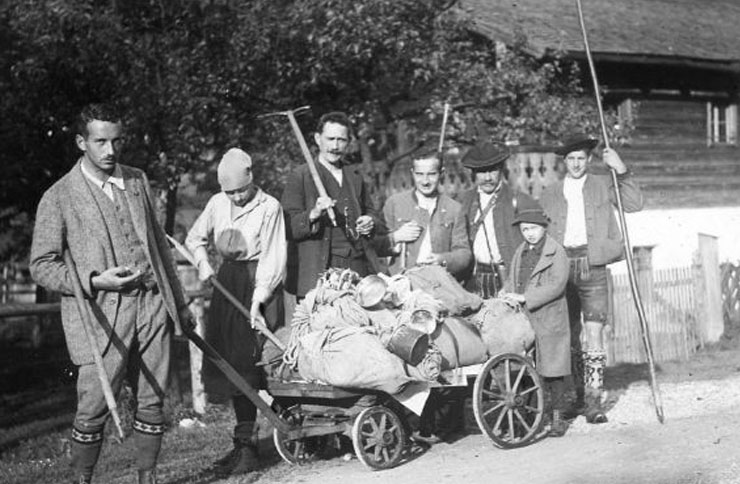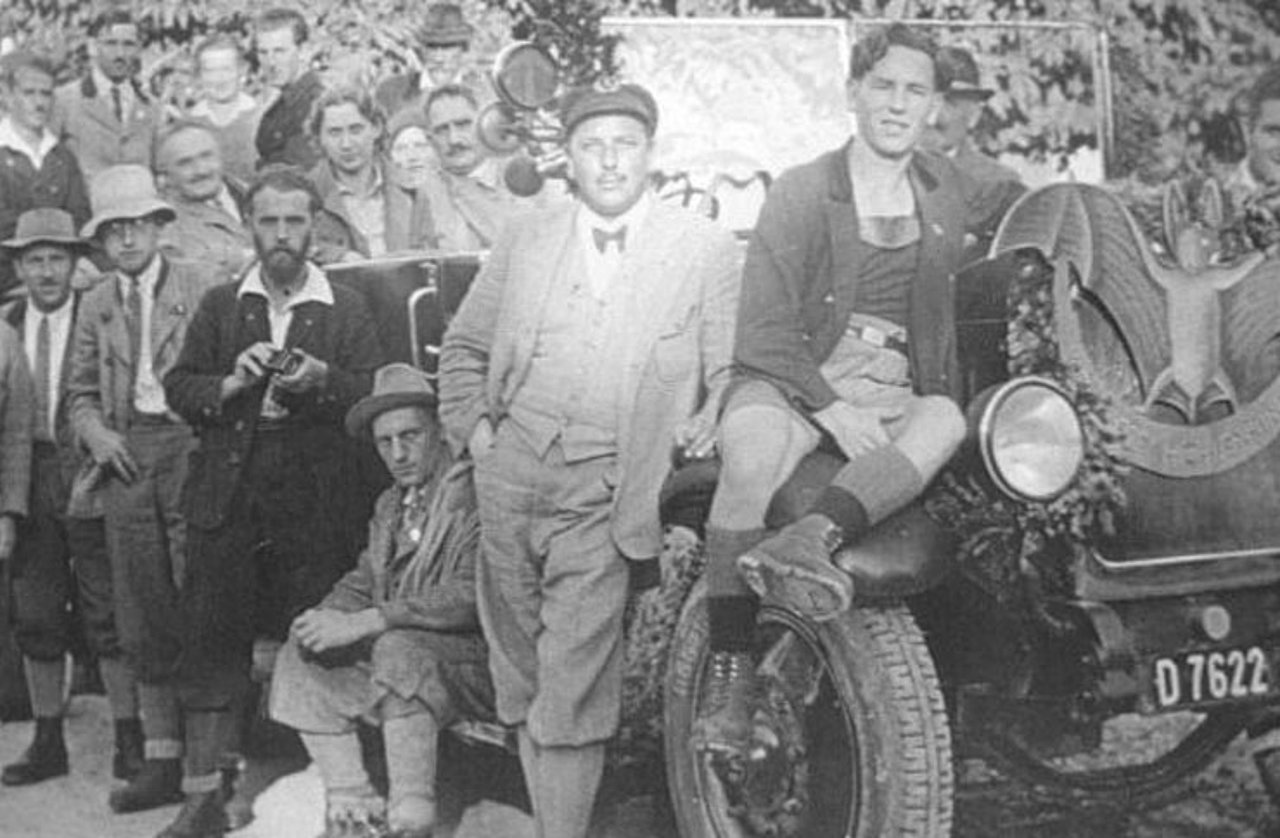
Discovery & Expeditions of the Eisriesenwelt
After the discovery of the Eisriesenwelt in 1879, intensive exploration of the world's largest ice cave began in 1912. By the end of 1920, 18 kilometres of cave passages had already been surveyed. Today we know that the Eisriesenwelt is more than twice as long (42 kilometres). So there was and still is a lot to discover.
1920: Opening of the show cave
The official opening of the show cave for tourist traffic took place on 26 September 1920. Heinrich Hackel, as the organiser, was able to convince participants to take a tour of the Eisriesenwelt. Thanks to the dedicated work of Erwin Angermayer, Friedrich Oedl and Robert Oedl, 180 people were guided through the show cave during this celebration. By the end of 1920, there were nearly 400 cave visitors.
The show cave, as it can be visited today, is about one kilometre long. After that, the accessible part ends and a largely ice-free, complexly branched cave system follows, which extends over several levels and is not accessible to tourists.

During the 1920s Expeditions into the Eisriesenwelt
However, the development of tourism in the Eisriesenwelt did not mean that exploration and the discovery of new parts of the cave ceased. In 1921, expeditions were conducted into the Röhren- and Maxilabyrinth, and progress was made through the Poldischluf to reach the Narrenberg and Trümmerhalle.
The following year, through the Haifischgang, the exploration extended to the Poldidom, Hohe Warte, Hades, and Erwintunnel, reaching the Robertversturz. Another year later, the connection to the Irrgarten and Regenkluft was successfully traversed for the first time.
The sensation: Discovery of a second entrance
One of the most important discoveries can be dated to 1932. Since 1928, Gustav Abel, an initiator of many cave expeditions and new explorations, participated in the Eisriesenwelt research. During one such expedition, the researchers found a second cave entrance in the Alvisreich. Completely unexpectedly, they discovered daylight creeping near dripstones, which led them to an entrance approximately 200 metres above the Achselkopf and the Dr.-Friedrich-Oedl-Schutzhaus.
1933 to 1978: Further breakthroughs and discoveries
In 1934 and 1935, various cave explorers made further advances that led deeper and deeper into the branching cave system - among others:
- Highest point of the cave system (Asgard)
- Exploration of the Long Labyrinth
- Advance into the Hräswelgrs Hall
- Survey of the upper Wasserberglabyrinth
In addition, in the lower Wasserlabyrinth, the Karlschacht and Schaubergergrund - the deepest part of the cave at the time - were discovered. They even succeeded in descending into the 100-metre-deep Guggschacht.
In 1939, the Alte Gang and the surrounding labyrinth were explored, and the cloister connections, the Wasserfallschachtlabyrinth and the Etagenlabyrinth were also surveyed.
With the beginning of the Second World War, cave exploration was heavily curtailed. But immediately after the war, new expeditions were set up and carried out. During one such expedition, Friedrich Oedl discovered a path through the Robertversturz and succeeded in discovering the Beyond. This is the part of the cave farthest from the entrance.
Temporary end of research in 1978: Remeasurement of the Eisriesenwelt
With the ambitious goal of creating an overall plan, Albert Morocutti began to carry out a complete remeasurement of the cave in 1973. This major project was completed after five years. During this extensive work, Morocutti kept discovering new areas, which were immediately included in the plans.
With increasing popularity came more and more supposed explorers who understood an exploration trip more as an adventure venture. This was accompanied by the accumulation of rubbish and litter in the cave and sometimes even the removal or damage of cave contents. To protect the Eisriesenwelt, expeditions were kept to a minimum, which also meant that few new discoveries were made.
Since 2009: Research continues
Since 2009, members of the Salzburg Caving Association, who are specially authorised to do so, have been carrying out targeted research - together with remeasurements.
Already during one of the first expeditions, a great research success was recorded with the discovery of the Hochkogeltunnel and the Eiszwergenwelt. Thanks to new climbing and ascent possibilities, vertical shafts in particular can be explored ever better. To date, the final development, surveying and investigation of the largest ice cave has not been completed. Researchers are gaining important data on climate change and its effects on the ice giant world, for example.
